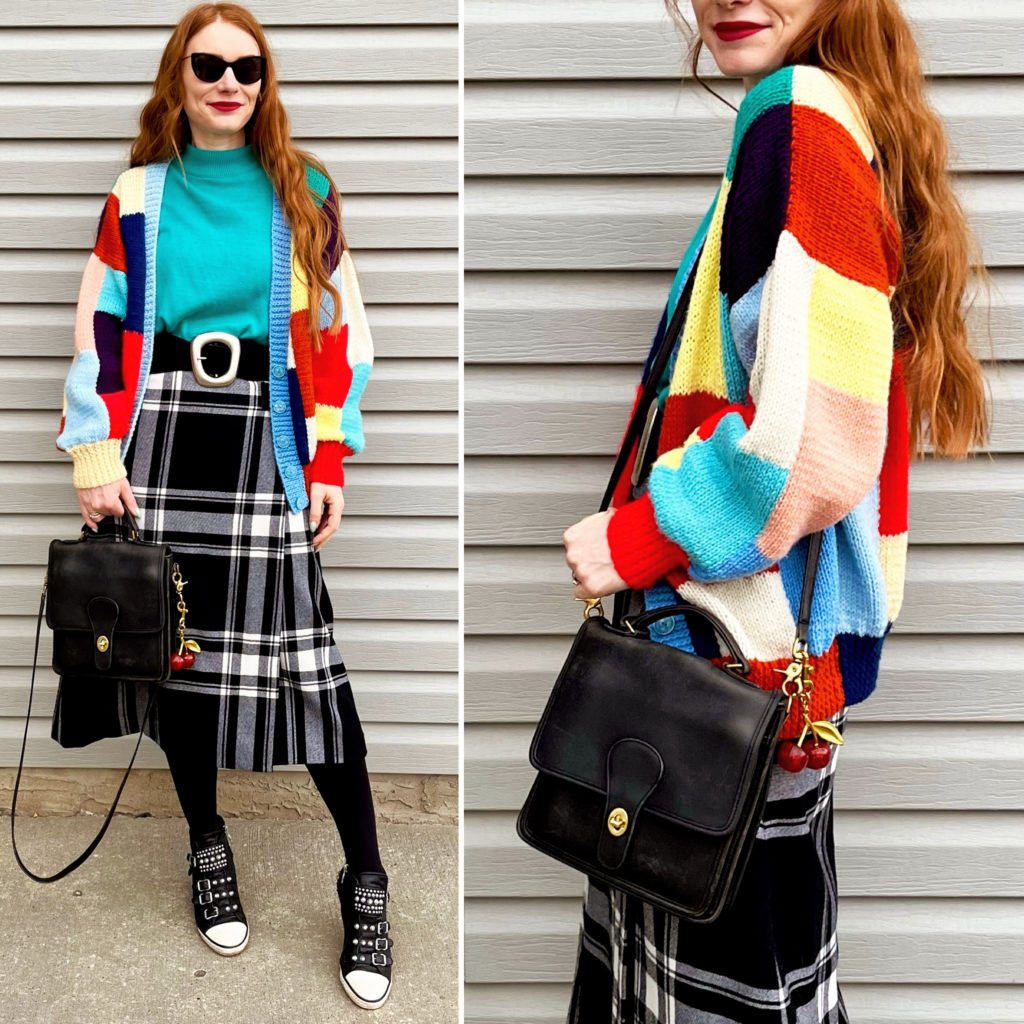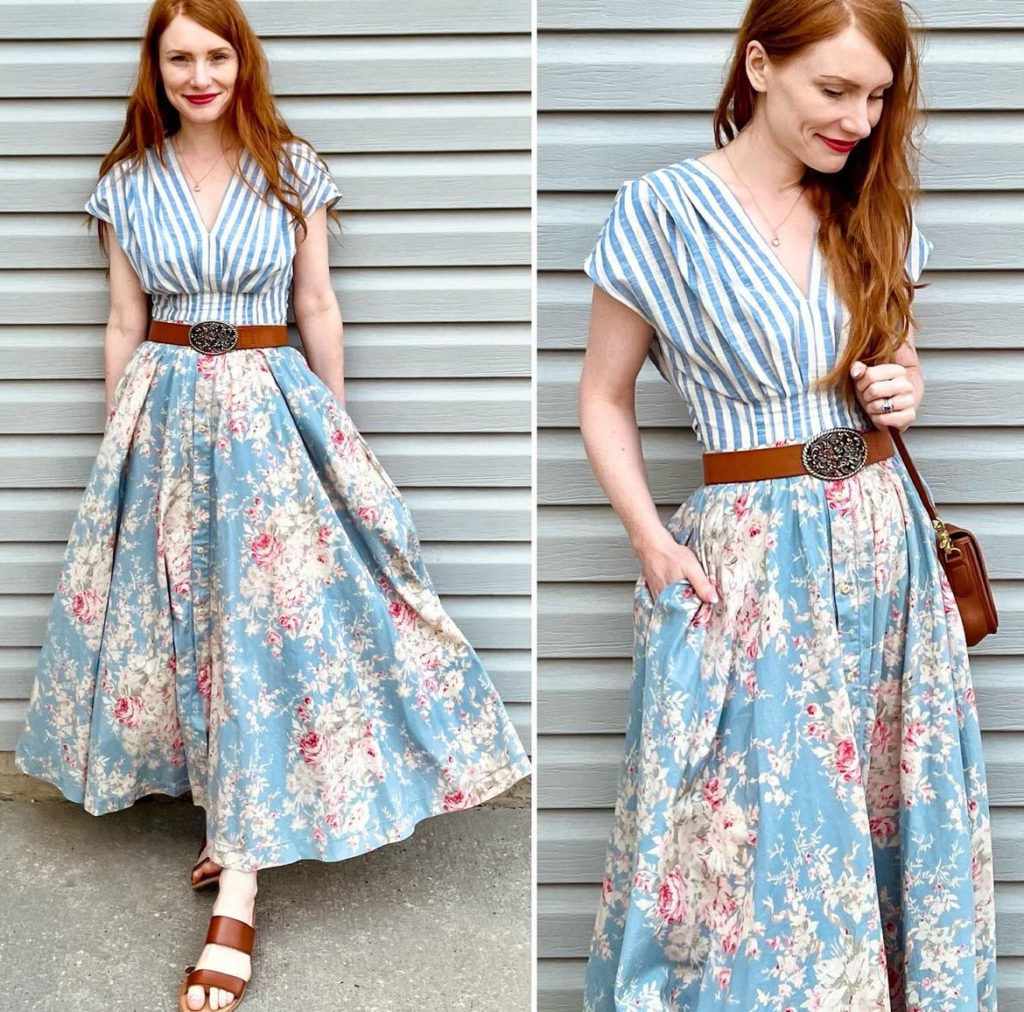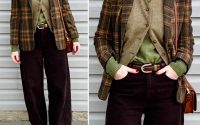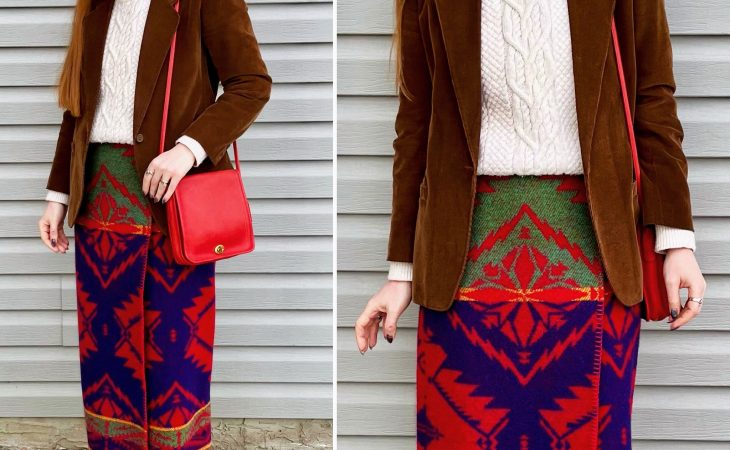It’s been donkey’s years since I last did a wardrobe analytics post, but the mood struck me the other day, and once my hyper-fixation kicks in … well, one can only ride it out. And you must also come for the ride! This time around, my brain got fixated on a question that I hadn’t considered before when running analytics on my closet: what proportion of my purchases this year (so far) have been vintage?
Going off anecdotal evidence vibes, it feels accurate to call 2024 my Year of Vintage. I have consciously focused my attention on buying older pieces, mostly from the 90s and 00s, both for the aesthetic and for the quality. The former aligns well with my current style, which has remained consistent over the last 18 months or so (and which I don’t see changing any time soon). As for the quality of that era, it was simply and inarguably better than anything sold in the last 5 years by most brands that are easily accessible to me (either retail or secondhand). So vintage is a win-win. It is also one of the few categories where thrifting can still deliver fantastic (bargain) finds. Designer clothing has been practically MIA at my local thrifts in the last 2 years, which is likely a combination of several factors – fewer donations as a result of changing macroeconomic conditions and/or competition from resale platforms, more resellers, etc. Contemporary fashion, on the other hand, is prone to arbitrary overpricing (and, as noted, the quality is trending down). Vintage is also getting rarer, and also starting to become subject to #thriftgrift, but it’s still the best value proposition going at the moment … in my personal opinion, of course.
So, was my impression correct? Is 2024 Adina’s Year of Vintage?
If we adopt a common definition of “vintage” — meaning clothing that is at least 20 years old — any items from 2004 or earlier would qualify. Obviously, most clothing does not come with a date stamp. [Gap and Banana Republic are 2 exceptions; they include an inside tag that lists the release month and year. It’s small and hidden usually, but a typical one might say something like “07/14” meaning July 2014 or “HOL/20” meaning Holiday 2020. I have seen these going back to about 1999. I am not sure if they had a different system before that, but any piece without that date tag can reasonably be assumed to be pre-2000.] So, I have to make my best guesses about the vintage of each piece I buy, based on the style, the look of the brand label (some 80s and 90s labels are very easy to spot from the font style used), the presence of union tags (super handy for dating), and the country of manufacture (ditto). I have written about the latter before, but it’s my #1 “easy tell” for vintage. For clothing made in the Y2K era or earlier, I’m looking for labels that say made in Korea, Taiwan, Hong Kong, Singapore, Thailand, and the Philippines. [Along with the US and Canada for some smaller brands. Ralph Lauren also did a bunch of its manufacturing in the Marianna Islands at one point in the last couple of decades.]
Anyway, based on these criteria, I have calculated that … drumroll, please … 48.5% of my clothing purchases this year have been vintage. I did not include accessories in that calculation because it’s harder for me to accurately date them, but I do think the percentage would be similar there. While, technically, the majority of my purchases this year have not been vintage, I still feel the Year of Vintage title is warranted because I am absolutely positive that this year’s percentage is much greater than in any previous year. I am very interested to see how this trend evolves in the future; I will definitely be keeping an eye on it. To make the process easier going forward, I think I will add a category to my purchase tracking sheet where I will note whether an item is vintage, so it’s tracked from the moment of purchase when the information is fresh in my mind. [I research every piece I add to my closet, including its likely vintage, as well as brand information if it’s a label I have not seen before.]
OK, moving on.
Here are some other stats I was curious about, and thought you might appreciate as well.
Where did I buy most of my clothing and accessories this year?
Unsurprisingly, the vast majority was thrifted: 84%. Poshmark and eBay accounted for 10%. Retail made up only 3% of my purchases, which I feel happy about. [The missing percentage points represent other various secondhand purchases, from consignment to garage sales.]
Did I make good choices?
This is always the question that haunts me, as a thrifter. It’s hard to make on-the-spot judgments, even with years of experience, and thrifting requires a lot of them. I try to be very, very discerning about what I buy, but I still do make the wrong choices from time to time – things that don’t end up being a good fit for me (or for my daughter, who sometimes takes my hand-me-downs if they suit her style). To date, about 4% of my purchases this year have been “misses” – i.e. things I bought and later chose to re-home. We are talking about a handful of things here, so it’s not too bad overall.
What kinds of fabrics am I buying?
I thought this would be another interesting thing to track. As I started to pay more attention to actual garment quality (as opposed to relying on brand names as a signifier of good quality) over the last few years, I have been thinking a lot more about fabrics and different types of materials. So what have I been buying in 2024?
Of clothing purchases alone, not including accessories, 28% were made of cotton, 20% were made of wool, 4% were made of silk, and 4% were made of leather. The remainder 42% were made of polyester or blends (meaning fabrics made from a blend of different fibers, which might include both synthetic and natural ones). I feel pretty good about these numbers, and I think they track with the percentage split for vintage/contemporary purchases. Most contemporary clothing is made from some sort of blend, if not 100% poly. For example, it’s not even that common to find 100% cotton garments anymore, outside of basic tees; it’s often, like, 90% cotton, 10% something else.
I am not a material snob or anything. Clearly, I still buy polyester and other synthetics. My current view is that most fibers have their ideal purposes or specific benefits, and it’s about knowing what to expect from their performance and then matching it to my own preferences and lifestyle needs. Sometimes polyester fabric is fine (and it’s a hard-wearing material, so you don’t need to baby it which makes clothing care easier). But I have to admit that I prefer cotton and wool, especially for things I wear close to the skin, like tops. Yes, this is another opportunity for me to remind you about how much I love cotton sweaters and lightweight cashmere base layers, LOL!
What am I paying for my clothes?
On average, $16.50 per item. This is, of course, a reflection of the fact that 97% of my purchases are secondhand. Estimating MSRP for the clothes I buy, especially vintage ones, is more of an art than a science; but I would ballpark my out-of-pocket cost at around 12-15% of the estimated retail value of the clothing. Again, that’s the kind of discount you can only get by shopping secondhand.
Interestingly, but anecdotally, I would say that this percentage is a bit higher than, say, 5 or 6 years ago. For example, in 2019, my actual cost was about 8.5% of the estimated retail value. I think the increase primarily correlates to two factors. One, I started shopping on Poshmark in 2020. Prices on Poshmark are always higher than at local thrift stores – at a minimum, due to the shipping costs. Two, thrift prices have absolutely gone up since 2019. There are many reasons for that, but inflation is probably first and foremost.
For fun, here are my top 5 most expensive items purchased in 2024 (so far):
Ralph Lauren vintage wool wrap skirt – $230 (eBay)

Vintage Coach bag — $138 (Poshmark)

Ralph Lauren vintage cotton floral skirt — $110 (eBay)

Jean Howell vintage wool cardigan — $81 (Poshmark)

Turquoise and silver ring — $80 (Poshmark)
As you can see, all of these were non-thrifted secondhand items. The quality and curation of items available on resale platforms comes at a price, but it’s worth it, IMO, in some cases. These are all pieces I love and plan to keep for a long time. Hopefully, forever.
And there you have it: another (mind-numbingly? I hope not) exhaustive wardrobe analytics post in the bag. I hope you found some ideas in it that might be relevant to your own clothes-buying experience, and if you have your own practices or suggestions for wardrobe tracking, please share in the comments.
Like this:
Loading…


![13 Best Sites to Stream UFC Live Online for Free [2024] 13 Best Sites to Stream UFC Live Online for Free [2024]](https://appearworld.com/wp-content/uploads/2024/11/13-Best-Sites-to-Stream-UFC-Live-Online-for-Free-200x125.jpg)


